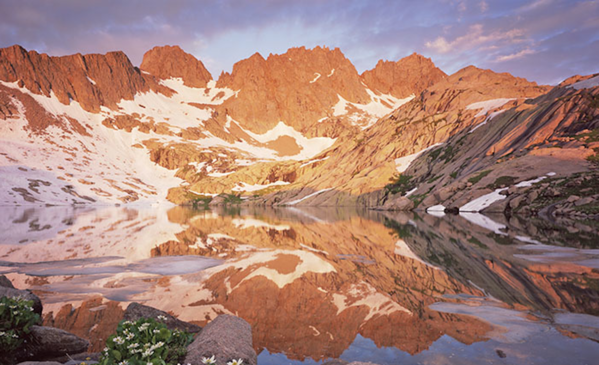The Local newsletter is your free, daily guide to life in Colorado. For locals, by locals.
On Thursdays, we usually highlight a Photo of the Week. Today, though, we want to show you how to take your own. Some of the most iconic images of Colorado’s natural splendor star a glowing sun peeking above the mountains. We asked Glenn Randall, Dan Ballard, and Grant Collier—three veteran, Colorado-based nature photographers—to share a few pointers on how to capture summer sunrises and sunsets like a pro.
(You can check local sunrise and sunset times here.)

You don’t need professional equipment.
Most smartphone cameras come equipped with HDR technology, which helps add clarity to images. “So many people are embarrassed to use their phones,” says Ballard, “but that’s not a deciding factor. It’s more the artistic side, the weather, and the light.” While using a tripod is always a good idea, Ballard says putting your phone on a beanbag (or similar) is an easy alternative for capturing a steady shot.
Highlight the foreground.
Make the focal point of your sunrise or sunset photo something else—like a river, lake, or some trees, which can reflect and amplify the sunlight. “Most people will see these colorful clouds and start taking pictures of those,” says Randall. “But that’s just one element of the picture. The photo is so much more interesting when you find something in the foreground.”
Understand light.
More than most types of photography, capturing a gorgeous sunrise or sunset is all about mastering the art of lighting. Set up your photo shoot on a partly cloudy day: Clouds help block light that naturally surrounds the sun, which leaves just the pure, undiluted sunlight that streaks the sky with color. Underexposing your shot enhances the colors even more.
Know the best spots.
Some of the best sunrises and sunsets turn up at popular destinations like Maroon Bells, Mount Evans, and Rocky Mountain National Park. But a more complicated journey can yield a greater result. Collier recommends the tiny mining town of Silverton and other remote places in southwestern Colorado, where you can find more west-facing views of the San Juan Mountains.








